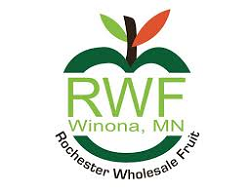Even as economic pressures persist, the grocery sector has proven remarkably resilient in 2025, and fresh produce is an ever-important driver.
According to Placer.ai’s Grocery in 2025: Visitation Trends and Consumer Behavior, shoppers are making more frequent, shorter grocery trips, favoring fresh, ready-to-eat options and compact store formats — trends that are reshaping how and where fresh produce is sold.
Fresh and Frugal on the Rise
While traditional grocery chains such as Kroger and Safeway still command over 70% of total foot traffic, fresh-format stores such as Sprouts Farmers Market, Trader Joe’s and Whole Foods are gaining ground. In the first quarter of 2025, these health- and quality-focused retailers outperformed others in visit growth and visits per location, pointing to increasing demand for produce-forward shopping experiences.
Particularly notable is the appeal these stores hold for remote workers. The report notes that work-from-home consumers accounted for 20.2% of visits to fresh-format stores — the highest among any grocery segment. Many are stopping in midday to grab produce-heavy lunches from salad bars, fresh-prepared meals or quick snacks like cut fruit and veggie packs.
Smaller Stores, Bigger Produce Opportunities
In line with shorter shopping trips, consumers are gravitating toward smaller grocery store formats. Stores under 30,000 square feet experienced a 3.2% year-over-year increase in visits in the first quarter of 2025. These neighborhood “micro-stores” often emphasize convenience and freshness, making them ideal locations for high-turnover produce sections, grab-and-go fruits and meal-prep staples.
For produce suppliers, this trend presents an opportunity to tailor offerings for smaller spaces — think compact displays, pre-portioned packs and highly perishable seasonal items that meet the needs of frequent shoppers making targeted trips.
Value Chains Grow, but Fresh Still Matters
Budget retailers such as Aldi and Grocery Outlet are also seeing growth as inflation-conscious shoppers seek affordability. Yet even in these environments, fresh produce is a key traffic driver. The “fresh and frugal” trend continues to strengthen, with consumers seeking deals on staple fruits and vegetables while still expecting quality and freshness.
Ethnic and Hispanic-Focused Stores Gain Ground
While overall ethnic grocery growth remained flat, Hispanic-focused grocers have shown steady visit increases since 2021. This “salsa surge,” as the report dubs it, indicates a growing appetite for culturally specific produce and fresh ingredients — such as tomatillos, cilantro, limes and chiles — that support traditional and fusion cuisines.
Retailers across all formats might benefit from incorporating more Hispanic produce offerings and merchandising around cultural cooking themes to capture a slice of this expanding market.
A Coastal Fresh Focus
Regional data shows that grocery stores dominate the food-at-home market on the West Coast, Northeast and parts of the Mountain Region — all areas where fresh produce tends to be a strong differentiator. Oregon leads with 61.6% of food-at-home visits going to grocery stores, followed by Washington and Massachusetts.
In contrast, states with lower grocery store visit shares — including West Virginia and Mississippi — might find opportunities to grow produce sales by emphasizing convenience, competitive pricing and seasonal selections in fresh departments.
As the 2025 Grocery Report shows, the grocery sector is being reshaped by consumer behaviors that favor frequency, freshness and flexibility. For fresh produce marketers and retailers, success in this landscape means adapting to smaller formats, targeting on-the-go and midday shoppers and offering affordable, culturally relevant produce options.
Key takeaways from the report:
- Shoppers are taking more, shorter trips to grocery stores. Since COVID-19, the grocery segment has steadily increased both overall visits and average visits per location — even as average dwell times have consistently declined.
- Grocery stores are holding ground against fierce competition. Despite competition from discount and dollar stores, wholesale clubs and general mass retailers like Walmart and Target, grocery stores have maintained their share of the overall food-at-home visit pie over the past several years.
- Grocery visit share is most pronounced on the coasts. In the first quarter 2025, grocery stores claimed the majority of food-at-home visits on the West Coast, in parts of the Northeast, Mid-Atlantic and Mountain Regions, and in Florida and Michigan.
- Fresh-format, value and ethnic grocery visit shares are growing at the expense of traditional chains. And in the first quarter of 2025, fresh-format and value grocers outperformed the other sub-segments with positive year-over-year visits and average visits-per-location growth.
- Hispanic markets are on the rise. Though the broader ethnic grocery sub-segment was essentially flat year-over-year in the first quarter of 2025, Hispanic-focused stores have seen steady visit growth since 2021.
- Smaller formats for the win. In the first quarter of 2025, smaller-format grocery store locations outpaced mid-sized and larger-format ones, underscoring the power of compact spaces to deliver significant foot traffic gains.














